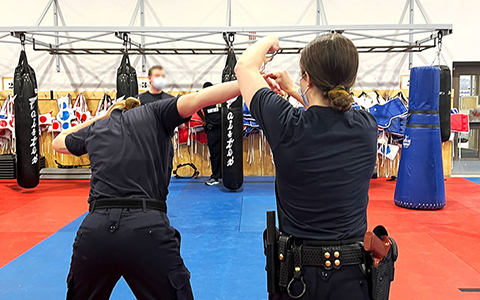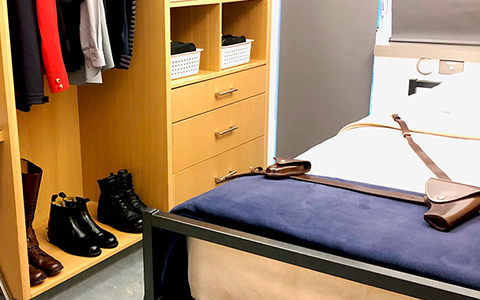Week 3: It's in the details
Simulation training and task sequencing

Simulation training is an important part of the learning experience at Depot. It allows cadets to participate in realistic scenarios from the safety of a controlled environment. Similar to a "choose your own adventure" novel, the judgement simulators react to each cadets' behaviour. This provides valuable results and teaching points, equipping cadets with skills for a variety of situations.
This week, cadets apply what they learned the previous week in regards to 10-codes and the phonetic alphabet. Using the driving simulators, they practice radio command sequences and general police driving skills. This allows them to become familiar with these tasks before they go on their first city patrol next week.
The driving simulation was helpful, but the motion sickness was a real battle there.
Fundamentals of notetaking
It is very important that cadets learn to take proper notes. Taking police notes is not an option, it is part of a police officer's investigative duties in the field. Good note taking techniques include being accurate, properly compiled, detailed and legible. Important observations and activities noted during calls support investigations and corroborate evidence.
There are many details included in notes, but the basics are who, what, where, how and why.
Handcuffing

In Police Defensive Tactics, cadets learn proper handcuffing techniques to use during an arrest. Cadets practise these techniques with each other.
Practical skills covered include the proper application and removal of handcuffs and the safe search and escort of a handcuffed individual.
There are many things that need to be said to your suspect to take them into custody. And the way it needs to be done is very important for your own safety, which makes you realize how intense this job can be.
Live fire
In week 3, cadets are introduced to the synthetic range where they continue learning gun handling and shooting fundamentals. All of this is in preparation for a session later in the week when cadets go to the range for their first live fire experience.
First Morning Parade
In a true testament to teamwork, the troop assembles together in the early morning hours for their first appearance in the morning parade. During this important milestone, they have the opportunity to demonstrate what they have learned in the first 2 weeks of drill.
This parade has been a tradition since the inception of the Force.
Living quarters : Attention to detail

During training, cadets learn to set up their living quarters - also known as their "pit" - in a very specific way.
Periodically throughout training, pits are inspected at random. This practice of spot inspections has been maintained, even in modern training, in a respectful manner.
Although making a bed seems like an everyday task, it highlights the importance of paying attention to details and reinforces muscle memory training. This is crucial in the field to ensure member safety and to gather accurate evidence to support investigations.
Highlights
Did you know : Firearms
Did you know that 80% of cadets have never shot a gun before Depot.
Did you know : Simulator
The judgement simulators are equipped with pellet shooters so cadets learn how to seek adequate cover.
- Date modified: